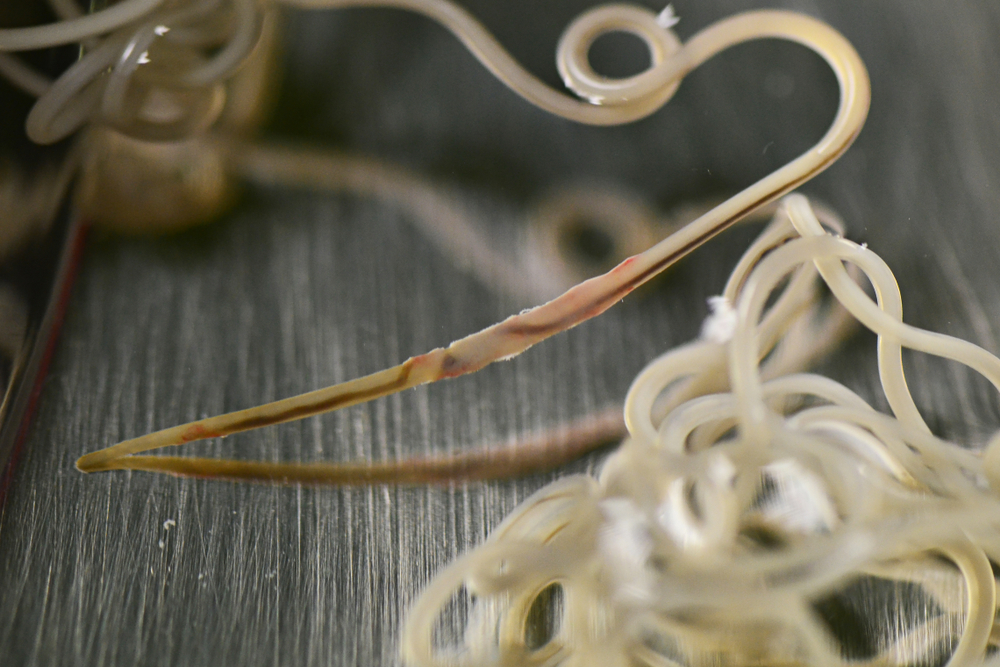Florida’s climate makes the state a paradise for people—and parasites, including the heartworm-disease-carrying mosquito. Each year, an increasing number of dogs and cats are diagnosed with this life-threatening but easily preventable disease. Sadly, many infected pets don’t survive.
Since the average number of Florida dogs testing positive for heartworm disease has been 15,000 each year since 2020, the Wellness Animal Hospital team believes it’s time for a heart-to-heart discussion about the harsh realities of heartworm disease in pets.
Heartworm disease is alive and well and preying on pets
Like mosquitoes, heartworm disease is ubiquitous and sneaky. Infected pets don’t show signs until their illness is well-established, and cats may show no signs at all, which means owners often do not seek veterinary intervention during the initial stages.
Also, heartworm disease doesn’t discriminate. The parasite is a risk for dogs, which most owners know, but can also infect cats and ferrets. However, the disease is expressed differently (i.e., different clinical signs), and owners may not recognize that their pet is suffering from a well-known parasitic predator.
Finally, heartworm disease has no respect for barriers or privacy—indoor pets are equally susceptible to heartworm disease, because mosquitoes can slip through doorway cracks, hitch a ride inside on your clothing, or fly through damaged window screens.
In short, no pet is safe from heartworm disease.
Heartworms damage your pet’s cardiovascular system
When an infected mosquito bites an unprotected pet (i.e., one who is not receiving heartworm preventives), microfilariae (i.e., juvenile heartworms) are injected under the skin and spend the next 30 to 60 days migrating through your pet’s tissues, sparking inflammation, and triggering an immune system response. They then enter the bloodstream and arrive at the large pulmonary (i.e., lung) vessels and heart, where they grow into mature adult worms up to 12 inches long.
The adult heartworms irritate the previously smooth vessels and heart walls, and decrease effective blood flow, causing catastrophic inflammation that eventually leads to lung disease and heart failure. The spaghetti-like worms also cause congestion and form life-threatening blockages or emboli. Heartworm embolism occurs in cats and ferrets particularly, because of their small hearts.

Initial heartworm disease signs in pets may not be obvious
Wait-and-see isn’t an option for heartworm disease management. By the time signs appear, infection is mature, and aggressive veterinary intervention is the only chance for your pet’s survival.
Early signs can seem nonspecific in dogs and nonexistent in cats. Tragically, for some cats, the only sign is sudden death.
Classic heartworm disease signs in pets include:
- Persistent cough
- Exercise intolerance
- Fatigue after brief physical activity
- Decreased appetite
- Weight loss
- Occasional vomiting
- Respiratory distress, which may be mistaken for feline asthma
Signs become more severe as the pet’s disease progresses and may include a pot-bellied appearance as fluid accumulates in the abdomen, pale or blue gums, seizures, fainting, or collapse.
Heartworm disease treatment is no treat for pets
Pet owners sometimes presume that heartworm disease treatment is as easy as prevention—but this is a grave assumption.
First, you must take note that heartworm disease treatment is available only for dogs. No safe, effective heartworm disease treatment for cats or ferrets is currently available.
However, heartworm treatment is no picnic for dogs. Infected dogs are given melarsomine (i.e., a medication administered through several deep intramuscular injections in the dog’s lower back that kills the adult worms in the heart and lungs). After the initial diagnosis, dogs must be severely activity restricted (i.e., on-leash to eliminate, no walking, running, or playing) for the entire four- to six-month treatment process. Activity restriction is critical for stopping further cardiovascular damage and preventing vascular blockages as the dying worms break apart and move out of circulation.
Although heartworm disease is treatable in dogs, their heart and lung damage can be permanent.
Heartworm prevention saves pet lives
Heartworm preventives are your pet’s best defense against this heartless disease. These medications are available in topical, oral, and injectable form and work by destroying microfilariae (i.e., the juvenile heartworms) before they can mature into dangerous adult heartworms. But, because preventives work retroactively (i.e., after an infected mosquito bite) they must be given consistently year-round, because one missed or forgotten dose will allow the microfilariae to progress to their next life stage when they no longer respond to preventives.
Fortunately, modern preventives are easy, effective, and safe to give—making protecting your dog, cat, or ferret easy. If your pet isn’t currently receiving heartworm preventives, contact Wellness Animal Hospital to schedule an examination.
Yearly screening tests for dogs provide next-level protection
Heartworm disease testing is strongly advised for all dogs, including those on heartworm prevention. Testing may seem redundant, but is important for ensuring your pet’s safety—and your peace of mind. Heartworm testing benefits include:
- Confirming an effective preventive protocol — A negative result lets us know that your pet’s preventives are working as anticipated.
- Diagnosing hidden infection — Early diagnosis can minimize your dog’s heartworm disease progression after a forgotten or missed preventive dose.
- Identifying breakthrough infections — Heartworm tests can help to identify rare preventive-resistant infections.
Heartworm disease is transmitted by the tiny mosquito, but its effects on pet health are massive. The Wellness Animal Hospital team wants to help you stay one step ahead with a safe and effective heartworm prevention plan. Contact us to discuss your pet’s needs, or visit our online portal to request an appointment at one of our three locations.







Leave A Comment